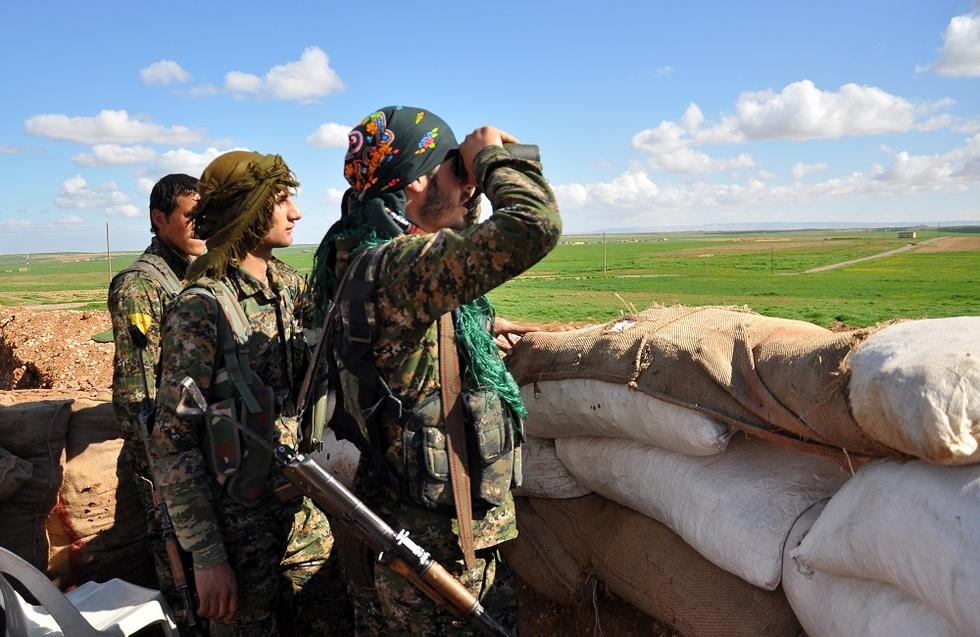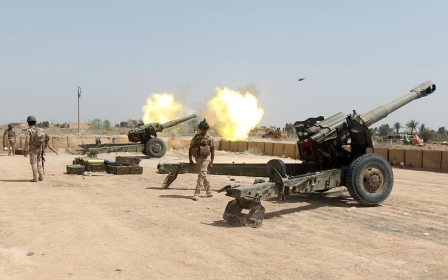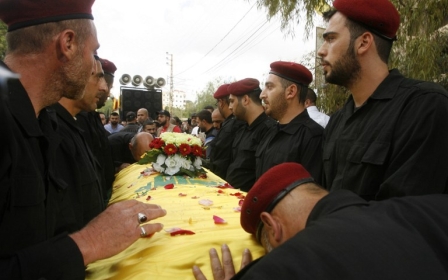Islamic State retreat leaves Syrian towns up for grabs

TEL HARMEES, northeast Syria - The first sign of trouble was the flag, a small, ragged rectangle fluttering from a thin pole, 100 metres down the road. From that distance it was difficult to pick out its pattern, but our escort car screeched to a halt in front of us.
“It’s the regime,” said our translator, Murad, and he jumped out of the van to check what was happening.
Through the half-drawn curtains over the side windows, we watched him greet an out-of-shape guy in fatigues and a grubby vest who had emerged from the house we’d stopped next to. We realised then how close we were to trouble in this isolated corner of Syria - three foreign journalists, all with a track record of documenting government atrocities, stumbling into government-held territory without visas.
But two minutes later, after handshakes and a warm goodbye, Murad got back in the van.
“That guy was regime too,” he said. “Shabiha [pro-Assad militia] from Latakia. But he told us which way to go to avoid them.”
A few days earlier, this stretch of road, a country highway running through a highly contested patch of Hassakeh province in northeast Syria, had been open. Islamic State forces had controlled the area until February this year, when they were pushed out by the Kurdish YPG (People’s Protection Units - the armed wing of the Kurdish Democratic Union, or PYD) on the ground and the international coalition from the air.
But now, quietly, the Syrian government had staked its claim on it and the region's fate seems uncertain, with scores of rival factions all staking a claim and civilians caught in the middle.
Messy dynamics
All the messy dynamics of the world’s war against IS in Syria are laid out in this remote corner of the country. The area around Tel Hamees, a small Arab town in the middle of rural Hassakeh province, has become one of the most fiercely contested patches in the region. This otherwise rather remote patch of earth has been the scene of IS offensives, Kurdish counter-offensives and dozens of international airstrikes.
It had been an important strategic prize for IS, a bridge between their strongholds in Iraq and Syria. When the Kurds took it back in late February with the help of the international coalition’s airstrikes, it was touted as a major victory against the militants.Many of the Westerners who have flocked to join the “Lions of Rojava”, the foreigners’ division of the YPG, took part in the battle for Tel Hamees. They posted smiling selfies on Facebook in the days after IS retreated from the town, proudly declaring the part they had taken in the battle of democratic freedom against what they say is religious despotism.
The truth, however, is far more complex.
On the ground, numerous groups took part in the battle, but they were unlikely allies bound together by nothing more than their shared opposition to IS and their opportunism. The Kurds were there, as was the Christian militia who we were travelling with. So too were other groups of various persuasions.
As we wandered around Tel Hamees, which was ravaged by the battle and now utterly abandoned, we picked out the layers of graffiti on the walls. There were still some signs of the IS occupation - blacked out patches overlaid with the white seal of the Prophet Muhammad. Many of them had been scrubbed out and replaced with YPG. In other places, we found an obtuse message scrawled in red paint: ‘MLKP’.
This was the calling card of the Marxist-Leninist Communist Party, an obscure Turkish militant group that in 2007 was listed in Turkey as a terrorist organisation. It is thought that the group has been sending fighters to join the YPG since 2012, and that five of its members have so far died in battles in Syria.
A young German woman called Ivana Hoffman was its latest casualty, killed as she fought in March against IS on the front line near the Christian town of Tel Tamer. Last month, the MLKP, newly buoyed by its alliance with the Kurds after spending decades as little more than a political curiosity, announced that it had set up a training camp in the Kurdish region of northern Iraq.
Forces loyal to President Bashar al-Assad, whose crackdown on pro-democracy demonstrators four years ago sparked Syria’s conflict, eventually leading to the rise of Islamic State, also took part in the battle for Tel Hamees.
According to pro-government media sources, government planes bombed IS positions in the same area as the international coalition, while on the ground its troops moved in from the north at the same time as the YPG and its allies moved in from the south.
While the true extent of the government's involvement is difficult to fully verify, the propaganda value was huge. On one pro-Assad Facebook page, one man thanked the international coalition for supporting government forces.
The US-led international coalition has openly struggled to find palatable allies on the ground in Syria. The YPG says that it communicates with the coalition through a proxy, passing on information about IS positions. US President Barack Obama has also ruled out any alliance with the Syrian government in the fight against IS, although Assad has claimed that he too is in touch with the coalition through a third party.
IS pushed back
With IS in retreat, Tel Hamees and the area around it has been left up for grabs. The swathe of territory regained from IS in February has been largely abandoned, and there have been reports of the YPG burning nearby Arab villages in retaliation for their residents’ alleged complicity with the militants. Some areas, such as the road from Tel Hamees, have been claimed by the government.
In one emptied village, little more than a small cluster of houses, we found a man - the only civilian we saw in the whole area - who had come to check on his house. His name was Abdul Karim, and he had come on a day trip with his family.
Despite being a government employee, he stayed there throughout the IS occupation, only fleeing to the nearby city of Qamishli, a Kurdish stronghold, during the fighting in February. It was the airstrikes that finally forced them to leave, and nothing had yet persuaded them to come back for good.
“Everyone stays for a while and then goes again,” he said, as his young children peered at the heavily armed Christian fighters out of the window of his pick-up truck. “None of them talk with us.”
New MEE newsletter: Jerusalem Dispatch
Sign up to get the latest insights and analysis on Israel-Palestine, alongside Turkey Unpacked and other MEE newsletters
Middle East Eye delivers independent and unrivalled coverage and analysis of the Middle East, North Africa and beyond. To learn more about republishing this content and the associated fees, please fill out this form. More about MEE can be found here.





